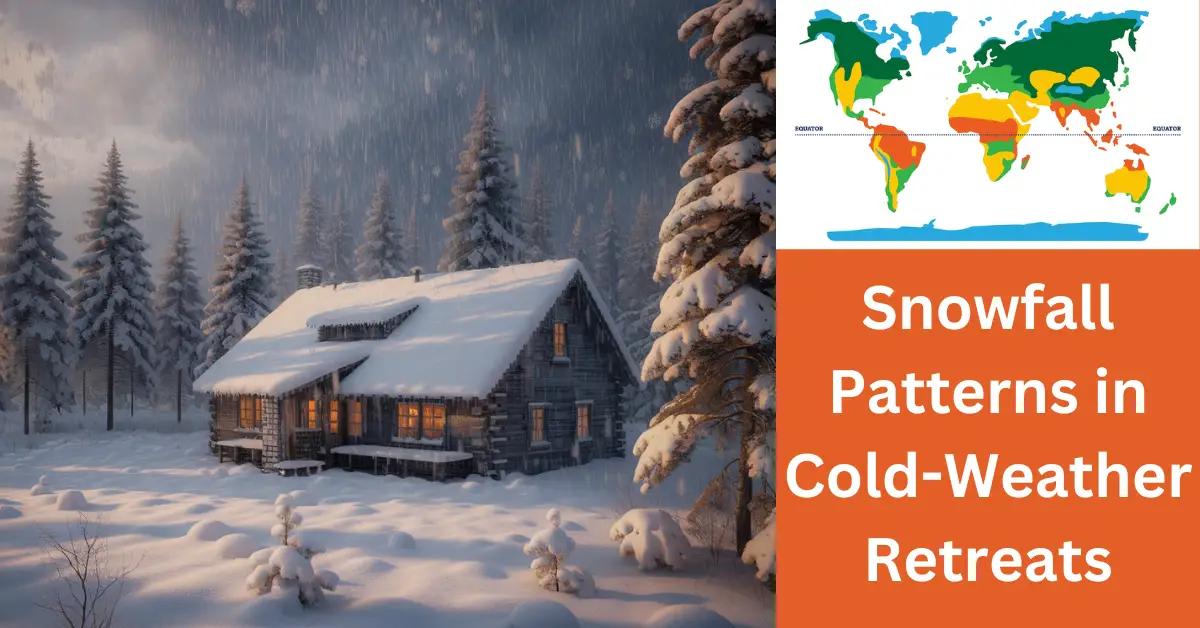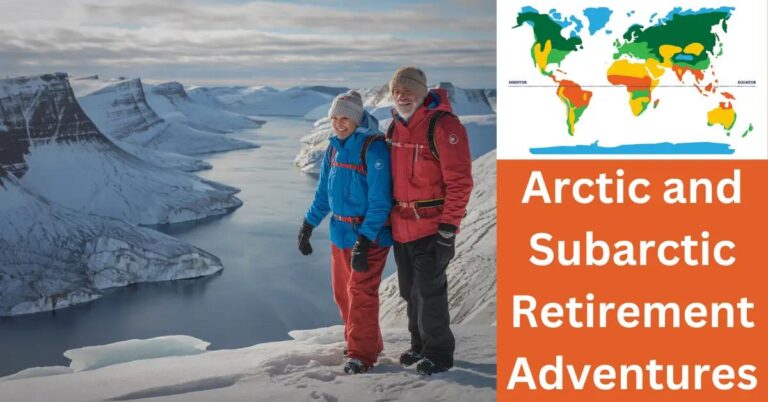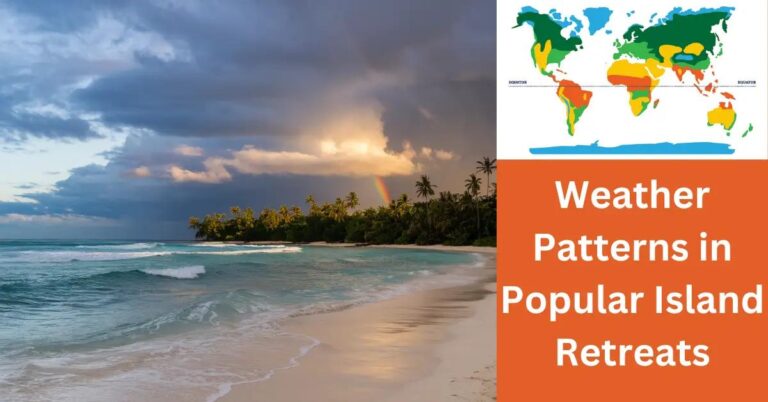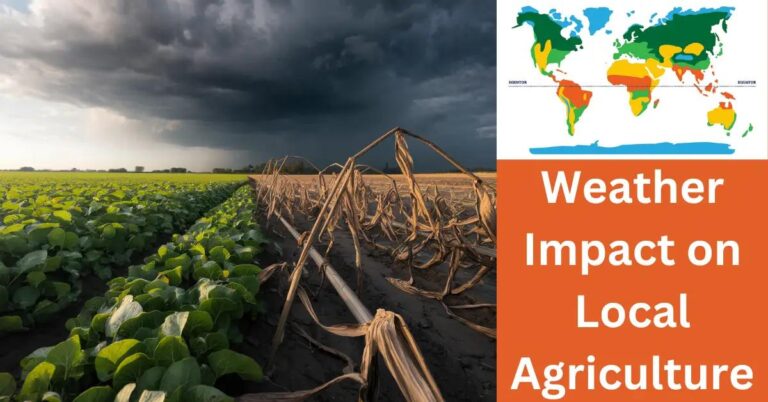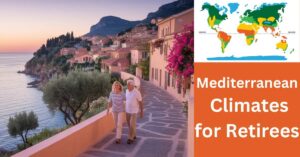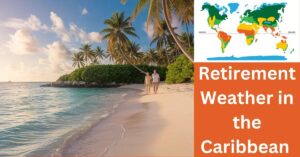TL;DR:
- Mount Baker, Washington averages 641 inches of snow; Alta, Utah gets around 514 inches.
- Snow resorts use machines to supplement natural snow.
- Check NOAA for accurate snowfall data to plan retreats and avoid bad conditions.
- Climate change affects snowfall patterns, causing resorts to adapt with snowmaking and adjusting trail management.
- Top snow destinations include Aspen, Colorado, and Whistler, Canada.
- Ideal snowfall months are January to March.
- Historical snowfall data can guide trip planning, sourced from NOAA and CoCoRaHS.
- Mountain retreats must manage snowstorm impacts with equipment and forecasts.
- Snowfall sustains regional tourism through festivals; regions plan events around peak snow.
- Surprisingly, places like California are experiencing increased snowfall.
- Assess snow quality and facilities when choosing snowy resorts, with Tripadvisor as a review source.
Thinking about escaping to a cold-weather retreat this winter? If you're a global nomad, understanding snowfall patterns is key to making the most of your snowy adventure. With our guide, you'll learn about the top retreats with dependable snowfall, the effects of climate change, and even snowmaking tech. Whether you're planning a vacation or seeking to relish a snow-filled lifestyle, this article will ensure you're well-prepared to enjoy every flake.
What Are the Most Reliable Snowfall Retreats?
When planning a trip to see fresh snow, some places never let you down. These places are known for heavy, reliable snowfall every year. One place that stands out is Mount Baker in Washington. It gets about 641 inches of snow each year. Another snowy spot is Alta in Utah, famous for its powdery, dry snow. It snows a lot— about 514 inches yearly.
You might wonder, do snow resorts make snow? Yes, many do! Resorts often use snowmaking machines when natural snow is low. These machines are like giant snow blowers. They help keep the slopes covered in snow for skiing and sledding.
It's important to check annual snowfall reports when choosing a retreat. These reports track how much snow falls each year. Knowing this data helps in planning trips to avoid slushy or patchy snow. For accurate reports, look at the NOAA website or snow-focused sites.
Several factors affect how much snow a place gets. High mountains usually have more snow since it's colder at the top. Nearby large lakes can add moisture to the air, increasing snowfall. Wind direction and how close a place is to the ocean also matter.
Snowfall analysis is key to finding the best retreat with consistent snow. Good analysis looks at weather patterns over years, not just one season. This analysis points to places with dependable snow. So, when picking a snow resort, check reports, explore snowmaking capabilities, and know about local climate factors. This way, you’ll choose a place where the snow is just right, every time.
How Does Climate Change Affect Snowfall in Cold-Weather Retreats?
Climate change is changing snowfall in ways that impact cold-weather retreats. As temperatures rise, the patterns of snow across regions shift. What are the impacts of climate change on snow patterns? Global warming can lead to less snow in certain areas as temperatures increase. Some places may even start to experience rain instead of snow when it's usually cold. In contrast, other areas might see heavier snowfalls because warmer air holds more moisture.
Retreats that rely on consistent snowfall must adapt to these shifts. What are the retreat snowfall adjustments due to climate change? Many resorts use snow-making machines to create snow when natural supplies are low. They also change how they manage runs and trails to match varying conditions.
Snow pattern changes have both benefits and risks. What are the advantages and potential threats of snow variations? For some, a longer snow season brings more visitors and fun. But sudden temperature changes can cause ice, leading to accidents. Crops and wildlife can suffer when snow covers them at odd times, or when melts too early.
Weather patterns in retreats have changed noticeably. What are the observed changes in retreat weather patterns? Shorter winters lead to earlier springs. Some resorts open later and close earlier. Increased rainfall has led to more frequent thaw events, creating slushy or icy conditions. Tracking these changes helps resorts plan better and maintain safety standards.
Understanding how climate change impacts snowfall helps those who visit or operate cold-weather retreats. Climate influence on snowfall affects travel plans, safety measures, and the natural landscape we enjoy. As the climate continues to evolve, it’s crucial for everyone to stay informed and adapt to new conditions.
Which Destinations Offer the Best Seasonal Snow Variations?
Top retreats boast diverse seasonal snowfall, making them perfect for a winter getaway. Iconic spots like Aspen, Colorado, and Whistler, Canada, often have varied snow patterns. These retreats are popular for their reliable snow seasons.
I often get asked, "Which month is best for snowfall?" January usually offers peak snowfall. It provides a magical blanket of fresh snow.
Exploring the different retreat weather patterns can make your trip memorable. In the Alps, snowfall begins as early as November. Meanwhile, Japan’s Hokkaido is famous for its deep powder snow by February.
Seasonal influences greatly impact snowfall patterns. The position of the retreat affects how much snow falls. Retreats in the mountains will often see more snow due to higher altitudes. Factors like the El Niño weather pattern can change expected snowfalls too.
Identifying the best months for snowfall can greatly enhance your experience. Plan to visit a retreat during its snowy peak for the best moments. Always check the retreat's past weather forecasts. This ensures you pick a time with adequate snow cover.
In Colorado, resorts enjoy steady snowfall from December to February. In Japan, prime snow happens from January to early March. While December may kick-off the snowfall, January often sees the deepest accumulation.
When choosing a winter travel destination, it's fun to consider these variations. This helps plan your trip better. Keep an eye on weather changes, as climate influences can affect seasonal snowfall.
By pondering retreat weather patterns and seasonal snowfall variations, you'll optimize your winter vacation. Embrace the diverse snow experiences that different destinations have to offer!
Where Can One Find Historical Data on Snowfall in Winter Getaways?
When planning a snowy retreat in the USA, knowing past weather patterns is crucial. You can access reliable historical snowfall databases to gather this information. These databases provide detailed records of snowfall over many years. Such information helps you see trends and predict future conditions. Many websites offer this data for free.
One key source is the National Climatic Data Center (NCDC). They track weather information going back decades. Another resource is the Community Collaborative Rain, Hail, and Snow Network (CoCoRaHS). This site relies on volunteers to track daily weather changes across regions. With these tools, you can better understand the climate history of your chosen destination.
Snowfall patterns vary greatly between regions. Coastal areas may see less snow due to warmer temperatures. Mountain retreats, however, often experience heavier, more consistent snowfall. Some regions even have microclimates, causing major differences in snowfall over short distances. Comparing regional averages will show you what to expect during your visit.
Understanding past snowfall data helps plan vacations better. It shows how areas adapted to different snow levels. For instance, some resorts build extensive snowmaking systems. These systems help maintain snow even during dry periods. By examining adaptation strategies, you gain insight into how retreats deal with snowfall changes.
Regional discrepancies in snowfall affect your plans, too. Knowing when and where snow falls most helps pick ideal travel times. Historical data highlights peak snow months, aiding vacation timing. This knowledge allows tourists to maximize snow activities during their stay.
Using historical snowfall data, you can plan a great winter retreat. Choose dates with confidence, knowing past patterns. Prepare for local weather, and enjoy the snowy backdrop of your cold-weather retreat. By leveraging historical insights, your snowy adventure will be safe, fun, and memorable.
What Are the Best Practices for Planning a Winter Vacation Based on Snowfall Data?
Snow can transform a landscape, making it magical. But to truly enjoy a winter vacation, you must plan smart. One crucial step is examining snowfall data for your trip. This data shows past and predicted snow patterns. Look for trends like when snow falls most and which months see heavy snow. This helps you choose the best time and place for your trip.
To make your travel fun, think about activities involving snow. Build your plans around snow-centric travel itineraries. Go sledding or skiing, or even try snowshoeing. Incorporating activities that require snow ensures a more engaging experience. Focus on destinations known for heavy and steady snow. This helps avoid unpleasant surprises.
Snow also helps the environment. It preserves moisture for the warmer months. Snow acts as a blanket, protecting plants and soil. It reflects sunlight, which helps regulate the climate. These benefits make snowy places more appealing to visit.
Before you leave, pack sensibly. Check forecasts and prepare for changing weather. Key winter retreat weather tips include packing layers, waterproof gear, and suitable shoes. These ensure you stay warm and safe. Prevent mishaps by creating a plan for potential weather disruptions. Sometimes, snow can block roads or cause delays, so have a backup plan.
Using snowfall data helps optimize your winter vacation planning. It guides you in choosing the right place and time for your trip. Focus on creating safe snow-centric experiences that resonate with you. There is no shortage of adventures to be had in cold, snowy retreats. Enjoy every moment that snow brings to your journey.
How Do Mountain Retreats Manage Snowstorm Frequencies?
Snowstorms can hit mountain retreats with great force. Managing these storms is crucial. One key factor affecting storm frequency is the movement of cold fronts. These fronts often bring heavy snow. When a cold front passes, resorts face increased snowstorm frequencies, which require careful planning and adaptation.
Now, let's address a common question: What temperature is too cold to snow? Snow can fall until it reaches -40 degrees Fahrenheit. Yes, it can snow at very low temperatures, although it's less common. Most heavy snow occurs between 15 to 32 degrees Fahrenheit. As temperatures drop, the air holds less moisture. This means less snow may fall, but it doesn't stop entirely.
To cope with snowstorm impacts, mountain retreats have various strategies. Snow removal is one. Plows and snowblowers keep paths clear. Staff trained for cold weather incidents play a vital role too. Their quick actions prevent potential dangers.
Preparing for varying snowstorm intensities is another challenge. Resorts often use technology to forecast snowstorms. Detailed weather tracking helps them stay ahead. Knowing when a storm will hit allows the resort to brace for impact. This means getting extra supplies and briefing staff about safety plans.
Safety is a top priority in extreme cold conditions. Retreats adapt by enhancing safety measures. Structures must withstand heavy snow loads. Insulation and heating keep indoor areas warm. Escape routes and emergency kits are checked regularly.
Guest safety during these intense conditions is crucial. Staff communicate clear instructions to visitors. They inform guests of safe areas and times to avoid outdoor activities. This focus on safety helps prevent accidents.
Mountain retreats' success depends on navigating natural challenges. Understanding snowstorm patterns and adapting their facilities ensures this success. Mountain resorts must maintain safe and enjoyable stays for all visitors, even during harsh snowfall.
Why Are Snow Festivals and Winter-Themed Events Popular in Certain Regions?
Snowfall holds a special power in tourism. This icy beauty draws crowds to cold retreats every year. But why do people flock to these frigid places? Snow plays an important role. Its presence supports vibrant regional tourism and boosts local economies. Many regions map snowfall patterns to plan their festivals, making sure events coincide with peak snow times.
When regions plan these festivals, they don't just go for any old spot. No, they carefully map snowfall patterns to ensure the best experience. There are regions, like those in Scandinavia and Japan, where snow is not just expected but celebrated. These places have learned how to use their icy treasures to turn winter challenges into advantages.
Winter-themed festivals and events are not just about fun and games, though. They play an important role in lifting local economies. People visit from all over the globe for these celebrations. They spend money in hotels, restaurants, and local shops, boosting local businesses. Without snowfall, such economic benefits would be hard to achieve.
One question often asked is: How does snowfall influence the location of festivals? The answer is through planning. Festivals set up where snow is most reliable. By reviewing maps and reports, event planners choose spots with the best conditions. These plans ensure events occur when snow is plentiful.
Why do people enjoy these winter events so much? Festivals provide entertainment, cultural experiences, and a break from the usual. Snowball fights, ice sculptures, and snowy landscapes create a magical atmosphere that delights visitors. Along with economic and cultural gains, the snow's appeal boosts overall tourism, adding to the charm of cold-weather retreats.
Planning a winter trip? Consider checking out some of these popular snow festivals. You’ll witness first-hand how snow turns a region into a winter wonderland where fun meets festivity.
What Are the Surprising Snowfall Trends in Traditionally Mild Retreats?
Ever thought about snow in places usually warm? Well, it's happening, and often! In recent years, we’ve seen surprising snowfall increases in areas where snow was rare. For instance, snowfall in California is catching many by surprise. The mountains in this state, like the Sierra Nevada, have seen trends in snowfall frequency rise in unexpected ways.
So, why is snow showing up in mild retreats like California? The weather is changing, and unusual snowfall events are becoming more frequent. Weather systems in the Pacific Ocean are shifting, which causes more storms. When these storms hit colder regions in California, they dump snow, not rain.
Let's explore one interesting pattern: the case of California. In January 2023, Los Angeles County saw snowflakes, showing how unusual weather patterns are. This did not happen often before, making it notable. Urban areas, especially, feel different when snow suddenly appears.
So, what does the future hold? Scientists use predictive models for emerging snowy regions. These models help us see where snow might increase even more. They look at factors like ocean temperature and wind patterns.
You might wonder how frequent and intense these unusual snowfall events will get. Well, the models say some regions will see more snow more often. Planning and adapting to these changes is key for these traditionally mild retreats.
Understanding these trends helps us prepare and adapt. If you’re wondering if your favorite mild retreat might need winter gear soon, stay tuned to weather changes. It could be a winter wonderland before you know it! Keeping an eye on weather models can help you predict where surprise snowfall may land next.
How to Evaluate the Best Snowy Resort Destinations?
Choosing the right snowy retreat can be tricky. How do you spot the best one? When assessing snowy retreat destinations, the first thing to consider is snowfall quality. Good snow means fun skiing and snowboarding. Does the resort have fluffy, fresh snow or is it icy and hard?
Next, check the facilities. Are there nice lodges and fun activities for all ages? Look for places with ski schools, cozy lodges, and snow parks. Reading snowfall retreat reviews is super helpful. Reviews tell whether the snow is nice and whether people enjoyed their stay.
What makes a resort great to visit? Comprehensive comparisons between popular resort options can show the differences. One resort might have a great ski area, while another might have better off-slope activities. Compare the number of ski runs, the difficulty, and the variety.
Authentic snowfall experiences depend on consistent weather patterns. Some places have snowmaking machines. These machines help maintain the snow when nature lacks. Knowing about snowmaking and natural snowfall patterns is vital for a genuine snowy retreat.
Customer insights can help decide where to visit. Reading what others say about their vacation shows what the resort is like. Are the staff friendly? Are the ski instructors helpful? This information provides a real glance at the whole experience. A resource for gathering customer insights is Tripadvisor.
Finally, consider location; closer doesn't mean better. Some remote retreats offer untouched beauty. Remember, choosing the right place requires time and research. A few websites allow you to explore snowy retreats comfortably. Research well, compare, and read reviews, and then decide where to go. Your snow adventure awaits!
What Are the Implications of Snowfall on Travel Logistics?
Traveling during heavy snowfall can be tricky. Snow can lead to delays and disruptions for tourists. The impact of snow on travel is huge. Roads and airports can close with little notice. Finding alternative routes is important.
How do you navigate travel logistics in snow-prone areas? First, always check the weather forecast. This helps plan your route better. Maps and GPS are also a blessing. They can guide you on safer paths. Apps you can use offer real-time updates on road and airport conditions. These make navigating snowy travels much easier.
Strategic planning is key during snow travel disruptions. One helpful tip is to book flexible tickets. This means you can change plans if needed without losing money. Calling your hotel ahead of time lets you know if they have extra blankets and heaters. Knowing there’s a cozy spot waiting makes the journey easier.
Keeping updated with winter travel advisories is smart. But how do they help? They provide you with current information on closures and warnings. Subscribe to them from reliable sources. Local news channels and weather agencies update you the fastest. This way, you can adapt quickly, saving time and stress.
What tools manage snow travel best? Think about snow chains for your tires or buying portable snow shovels. They help you dig out if stuck. Warm clothes are a must. Never forget a fully charged phone. It helps you stay connected and get help if needed.
Snow impact on travel doesn’t have to spoil your fun. By planning smart and staying informed, you can manage snow logistics like a pro. Winter travel can be as fun as it can be challenging. Stay warm, stay safe, and enjoy your adventure!
How Do Visitors Prepare for Snow Immersion Experiences in Cold Retreats?
Before you dive into snowy adventures, gear is the first step! Essential gear for snow travel includes warm layers, waterproof boots, gloves, and a sturdy jacket. Always pack a hat!
Knowing the 7 types of snowfall can make your experience safer. These types include flurries, showers, light snow, heavy snow, sleet, ice pellets, and graupel. Let me explain what that means. Flurries are brief and light, while showers are more intense. Light snow quickly covers the ground but doesn't last long. Heavy snow can pile up fast and make travel hard. Sleet and ice pellets bring icy surprises, while graupel looks soft but can be sneaky.
Safety is key, too. Choose bright clothing to stand out in the white snow. If you plan to travel in the snow, tell someone your plans. Carry vital tools like a whistle, first aid kit, and water bottle.
Understanding varied snowfall types lets you avoid surprises. During light snowfalls, paths remain visible. Heavy snows can cover landmarks making navigation tough. Sleet or ice pellets need more careful walking to avoid slips.
An informed traveler enjoys a better experience. Bring maps of your cold retreat. Know where to go for safety help, like lodges or visitor centers. Shops near retreats often stock gear you might need.
In any snow retreat, slow down and take it in. Each flake holds magic, and each trip promises new memories. If you plan ahead and pack right, your snow immersion will be unforgettable. For more about specific places to explore, check out Snowy Resort Reviews.
Preparing well lets every snow visit turn into a fantastic story. Just imagine the beauty and joy you can find in the snow!
Conclusion
Finding the best snowy retreats requires more than just glancing at brochures. From examining snowy mountains' annual snowfall to understanding climate change's effect on snow patterns, we've covered a lot. We discussed when and where snow events offer the best travel experiences. Reliable snowfall data helps us plan winter escapes. Snowstorms and festivals add charm and challenge, showing winter tourism's appeal. As you gear up for your next adventure, remember these insights to truly enjoy the magic (and surprises) of winter retreats. Keep exploring, and let the snow guide your journey!

